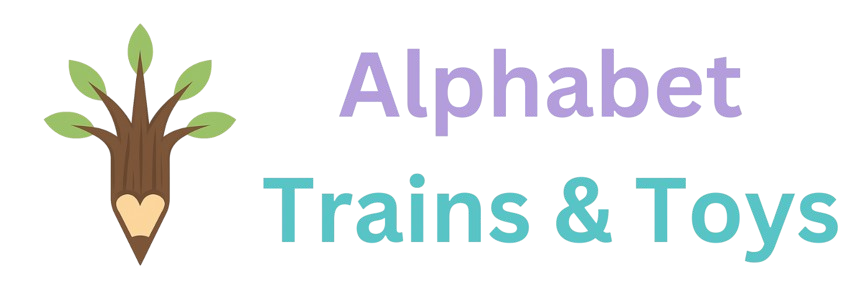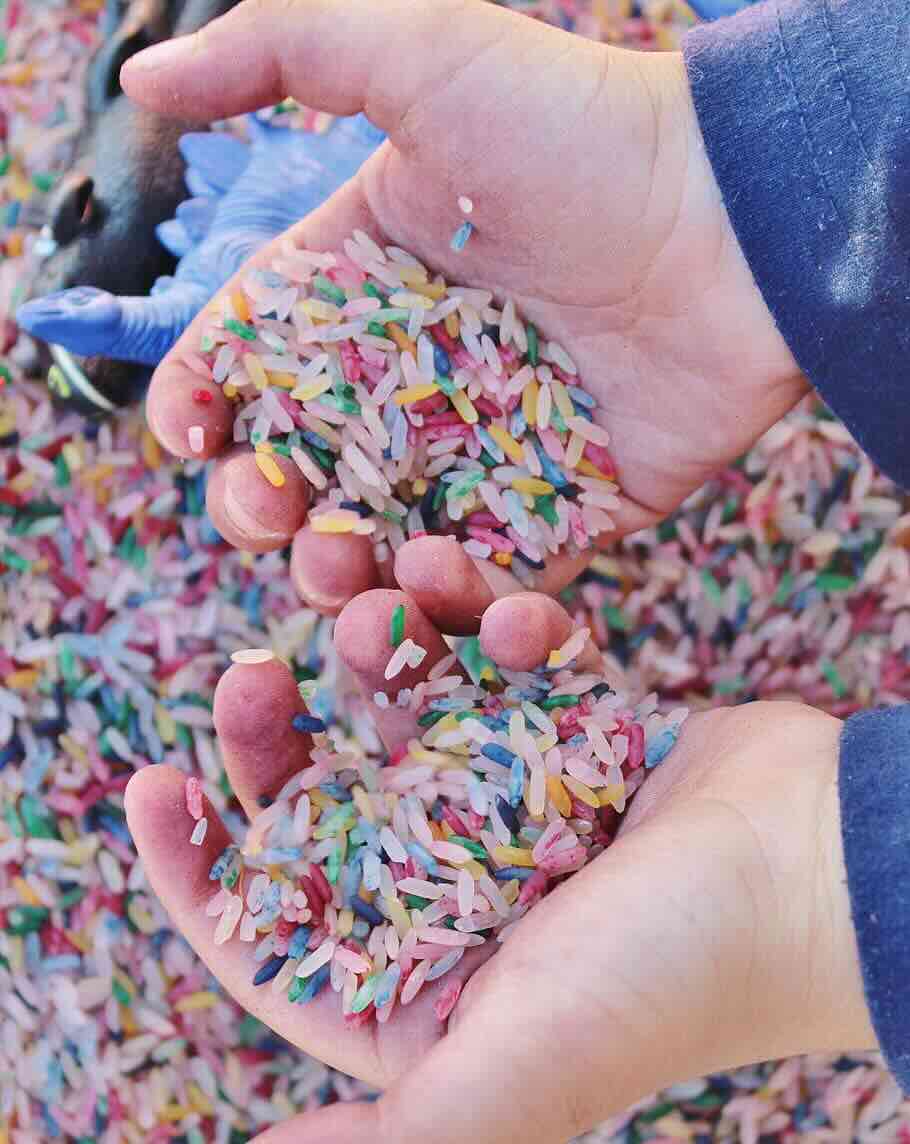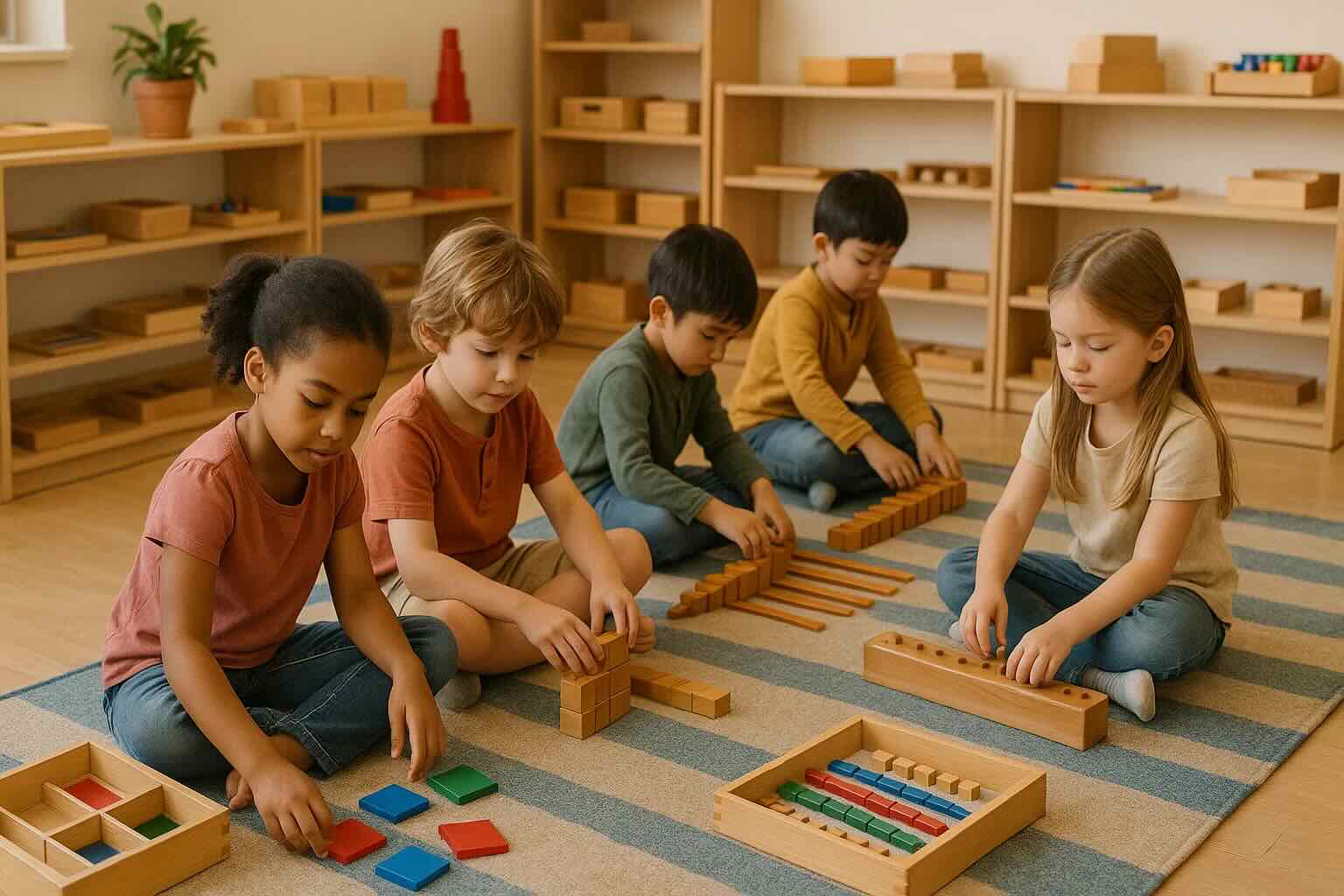Montessori children are actively learning through every action, behavior, and environment. Toys play an essential role in children's education, and you can start with baby toys to introduce learning. These toys help your child grasp new concepts and develop skills while playing. So, whether you're a parent or teacher, it's important to know how to use Montessori toys effectively for your child's development.
Each Montessori toy serves a purpose, focusing on skills in the early developmental stages. Age-appropriate toys significantly stimulate a child's growth, from walking and talking to socializing and knowledge acquisition. Montessori toys motivate children to explore and learn by experimenting.
Different categories like learning toys, pull toys, puzzles, and play sand cater to a child's skill-building. For example, building blocks foster fine motor skills, while pull toys enhance walking skills. Toys are much more than playthings, so research and select toys that contribute positively to your child's growth.
Below is a list of Montessori toys that support various developmental skills.
🎯 Our 5 Best-Selling Montessori Toys
Trusted by thousands of families. These are the toys parents buy again and again.
📌 Pull Toys for Montessori Motor Skill Development
Pull toys are a staple in the Montessori world, designed to stimulate fine motor skills and whole-body coordination. From walker wagons and doll strollers to wooden animals and trains, Montessori pull toys help children build strength and balance. As children pull toys along, they develop self-direction and spatial awareness, key skills in Montessori education. These toys also introduce distinct sounds and motions, enhancing sensory perception.
Discover the long-lasting advantages in our article on the benefits of Montessori toys.
Pull toys are typically made of natural materials like wood or metal and come in various shapes, including animals, vehicles, and even trains, allowing children to choose toys that interest them.
The American Academy of Pediatrics emphasizes that traditional toys, such as pull toys, play a significant role in a child's physical development. These toys encourage physical activity, which can enhance self-regulation and peer interaction through the negotiation of play rules.1
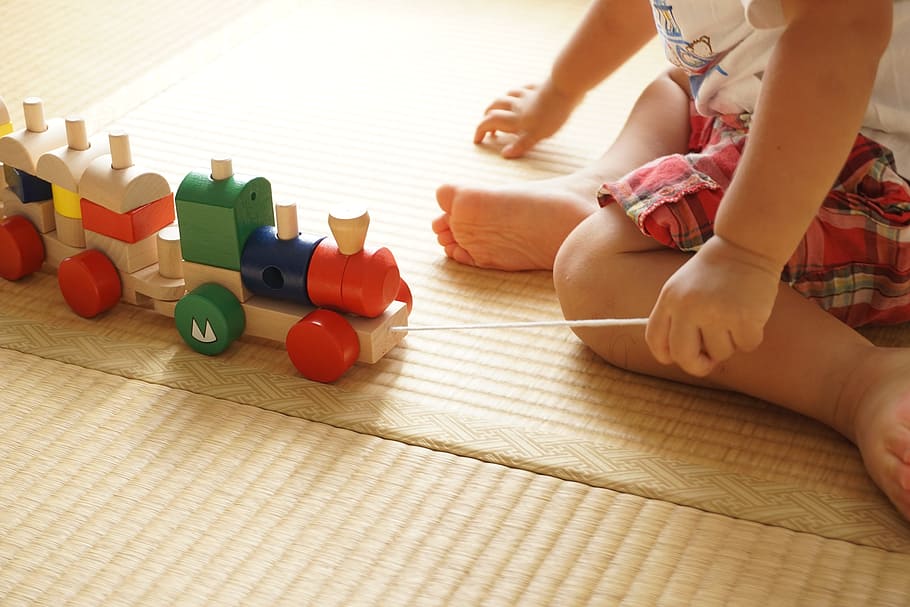
Learning and Development
Pull toys can be more challenging than push toys. A toddler may encounter obstacles when pulling a toy, which helps them strengthen larger muscles and improve balance. They gradually develop skills to navigate obstacles, building both physical and cognitive abilities.
Montessori Perspective: Montessori environments emphasize purposeful movement, meaning toys should encourage children to explore their own movement with clear outcomes. Pull toys align with this principle as they support a child’s development of independence, coordination, and awareness of their actions. In a Montessori setting, children use pull toys not only to practice walking but also to understand concepts like cause and effect as they navigate their environment.
Age Group
Pull toys are suitable for babies around 15 months old. With regular play, toddlers typically master pulling or pushing by their second birthday.
Pros
- Aids in physical growth and limb development.
- Supports cognitive development in toddlers.
- Encourages better grasp and holding abilities.
- Great tool for developing balance.
- Improves decision-making and problem-solving abilities.
Cons
- Potential for entanglement or loss of balance.
- Long cords and strings may pose hazards for babies.
- Tripping over a pull toy can lead to injuries.
Pull Toys: Tips for Parents
- Encourage Safe Exploration: Let your child pull their toy in open areas to build confidence.
- Introduce Gradually: Show them how to pull gently, encouraging control. Begin on soft surfaces like carpeted floors.
- Highlight Sounds and Movements: Describe the toy’s sounds and movements, such as, “Do you hear the wheels? Can you make it go faster?”
📌 Wooden Blocks
Wooden Blocks are a versatile learning medium for growing brains. Blocks can be made of a diverse range of materials, including wood, plastic, or foam. They play a key role in the cognitive, physical, and emotional development of preschoolers.
Blocks improve toddlers' attention span significantly, as shown in a 2021 study by Rodić and Granić, which explored the role of tangible interfaces in early childhood education. 2
Toddlers who often play with blocks develop better hand-eye coordination and have superior problem-solving abilities. Besides, blocks have letters printed on them that help improve your child’s vocabulary and reasoning ability as they grow.
It is important that when you choose a toy for very young children, you try to pick something that is made of natural materials rather than man-made stuff. This helps kids feel closer to nature and provides ease of mind for parents. After all, you never know what is in the plastic or the foam used in making the blocks.

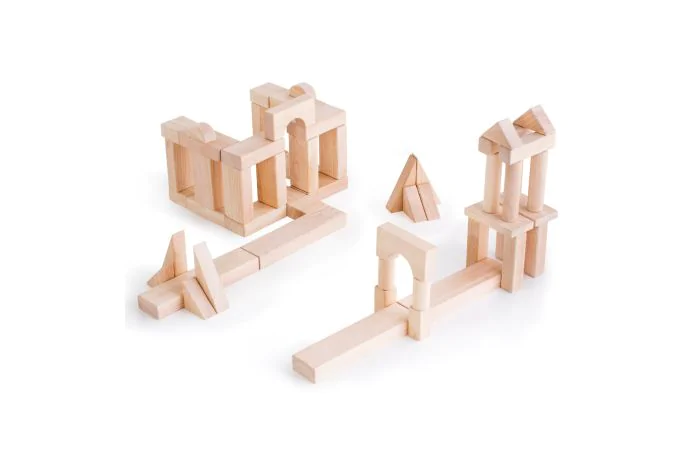
Learning and Development
Blocks make it easier for your children to learn the names of various colors, shapes, and sizes. Letting two or more children play with blocks together will enable them to learn the concept of sharing and independence, eventually boosting their social skills.
Montessori Perspective: In Montessori classrooms, wooden blocks serve as self-correcting materials, which means children can see and learn from their own mistakes while building. The blocks introduce mathematical and spatial concepts, such as size, symmetry, and balance, which are foundational for logical thinking. Montessori also emphasizes the use of natural materials, and wooden blocks provide a tactile experience that enhances children’s connection to nature and real-world elements.
Age Group
Children 6 months old and above can play and learn with blocks. They come in countless variations. Parents and teachers can choose the blocks that fit the developmental stage of a child.
Pros
- Blocks offer an opportunity to develop scientific thinking in preschool children.
- They help toddlers develop self-esteem and confidence.
- Blocks improve the attention span of toddlers significantly.
- Mathematical skills such as balance, symmetry, comparison, and measurement are taught through play.
- Blocks help develop vocabulary, reasoning, and problem-solving abilities.
Cons
- Wooden blocks, if made from cheaper material, pose the risk of injuries due to splinters.
- Low-quality plastic blocks may contain toxic compounds such as BPA and lead.
Wooden Blocks: Tips for Parents
- Provide a Safe Stacking Area: Choose a clear, stable surface where your child can build without interruptions or toys rolling away.
- Model Simple Structures: Start by building small towers or shapes, then encourage your child to replicate or add their ideas.
- Encourage Storytelling: Ask questions like, “What are you building? Is it a castle or a house?” This can foster imagination and language skills.
🪨 Shop Our Premium Wooden Block Sets
We carry wooden blocks that meet authentic Montessori principles - natural maple wood, non-toxic finishes, and developmental design.
📌 Abacus
The Abacus is one of the most effective toys to enhance kids’ mathematical skills, also aiding in color and pattern recognition. This versatile educational tool helps children grasp the fundamentals of subtraction and addition while the colorful beads spark curiosity.
Using the abacus, children learn to count by shifting beads from one side to another. Older children can develop a concept of sums by counting and stacking beads on one side. For subtraction, they can remove beads one by one, helping them understand basic operations. Some abacuses even feature built-in equations to support further learning.
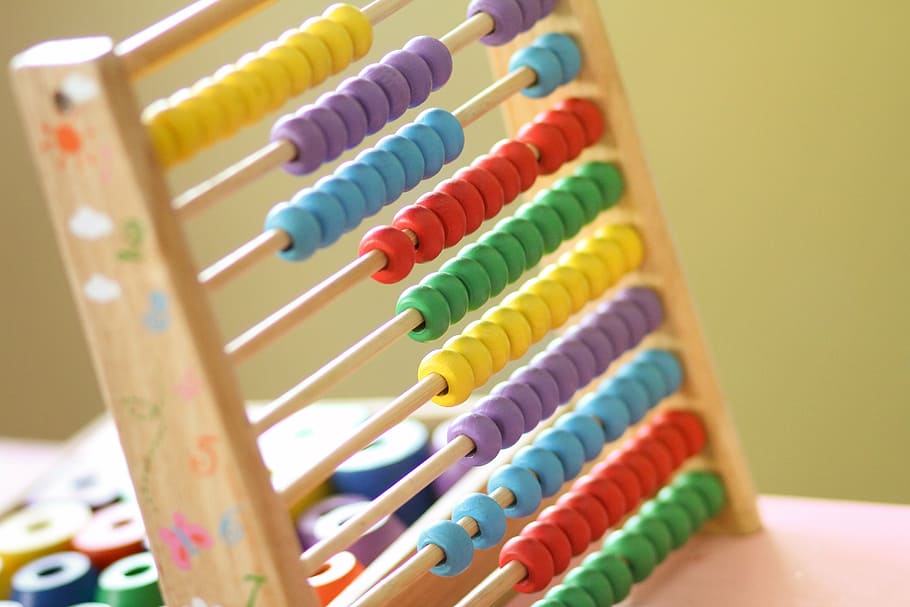
Learning and Development
If you use an abacus for homeschooling, your children will acquire age-appropriate arithmetical knowledge. In many educational systems, the abacus is a fundamental part of Montessori learning due to its hands-on approach to math.
Age
The abacus is suitable for preschoolers aged 4-6. Older kids can also use it to advance their math skills, making basic counting enjoyable and easy.
Pros
- Ideal for kinesthetic learners.
- Shifting the beads enhances fine motor control.
- Promotes hand-eye coordination.
- Makes learning addition and subtraction easy and enjoyable.
- Improves mental calculation skills in preschoolers.
Cons
- Requires knowledge of teaching techniques to use effectively.
Abacus: Tips for Parents
- Start with Counting Basics: Show your child how to move beads one by one to count. Once they’re comfortable, add simple addition and subtraction.
- Use Colors to Teach Patterns: Encourage pattern recognition by asking them to arrange beads in patterns like “red-blue-red-blue.”
- Turn it into a Game: Challenge them to move specific numbers of beads, such as “Can you move 5 beads from left to right?”
📌 Puzzles
Puzzles are a highly effective Montessori teaching tool, available in various types and sizes to help children with shape recognition, size differentiation, and number and alphabet identification. For younger kids, peg puzzles and wooden tangrams are ideal as they develop their pincer grasp. As they grow, traditional jigsaw puzzles introduce an engaging challenge, enhancing mental skills like memory, problem-solving, and fine motor skills.
Choosing safe, non-toxic wooden puzzles promotes healthy play and learning. Providing children with puzzles instead of screens is one of the best ways to support their cognitive growth and focus.
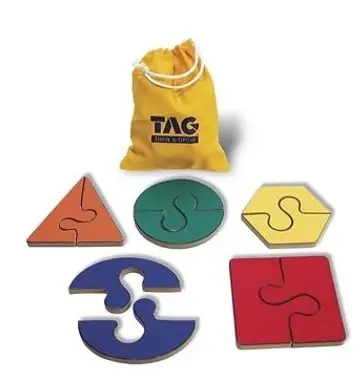
Learning and Development
Montessori puzzles teach children about wholes and parts while improving patience, focus, and concentration. Puzzles also help with foundational skills like shape recognition, goal-setting, and hand-eye coordination, preparing children for structured learning environments.
Montessori Perspective: In Montessori, puzzles are typically designed to isolate one concept, such as shape, size, or order, allowing children to focus on one skill at a time. Montessori puzzles are also self-correcting, meaning that children can identify and fix their mistakes independently, which fosters problem-solving skills and builds confidence. Simple, realistic images—like animals or landscapes—are often used, encouraging children to connect their learning to the real world.
Age
Puzzles are suitable for children starting at age 2, with simpler puzzles featuring large pieces. As cognitive and motor skills progress, more complex puzzles can be introduced, engaging older children, teens, and even adults.
Pros
- Puzzles are versatile and can be used in classrooms, playrooms, or homeschooling setups.
- They improve concentration and attention span.
- Puzzles stimulate cognitive development and fine motor skills.
Cons
- Puzzles with too many parts can overwhelm young children, so age-appropriate selections are crucial.
- Puzzles with small pieces may pose a choking hazard for younger children.
Puzzles: Tips for Parents
- Choose Age-Appropriate Puzzles: Start younger children with larger pieces and introduce more complex puzzles gradually as they grow.
- Guide with Encouragement, Not Answers: Offer hints or encourage them to try different angles rather than completing the puzzle for them.
- Celebrate Small Wins: Recognize each correct placement to boost confidence and maintain engagement.
🧬 Our Most Popular Puzzles
From toddler-friendly wooden puzzles to challenging 500-piece sets - we have puzzles for every developmental stage.
📌 Stacking Toys
Stacking rings toys are essential in any home with toddlers. This classic toy is popular for its role in developing a range of motor and cognitive skills in preschool children.
Stacking Toys, like stacking rings, enhance eye-hand coordination and problem-solving skills. These toys also teach size sequencing and color recognition, making them an ideal Montessori learning tool.
Crafted from high-quality wood, stacking rings are safe for very young children, with smooth, well-rounded surfaces and no sharp edges. The durability and quality construction make these toys popular among Montessori resources.
Learning and Development
Stacking encourages the use of various muscles, promoting both fine and gross motor skills in young children. It also aids in developing hand-eye coordination.
Beyond motor skills, stacking toys teach toddlers about shapes, colors, sizes, and spatial relationships.
Montessori Perspective: Montessori stacking materials are designed to enhance logical thinking by isolating one concept at a time—typically size or order. When children stack rings, they are encouraged to sequence the rings by size, fostering precision and concentration. Montessori stacking rings also focus on simplicity and high-quality materials, guiding children to focus on the task itself without unnecessary distractions.
Age
Most babies start stacking objects between 13 and 15 months. If your toddler hasn’t begun, you can encourage the skill through play, such as asking them to hand over rings to you for stacking, building confidence as they replicate your actions.
Pros
- Stacking rings are compact and easy to store.
- They are simple to clean.
- They help children learn to classify by color and size.
- Essential for building fundamental motor and mental skills in toddlers.
Cons
- Toys made from poor-quality materials may pose safety risks.
Stacking Toys: Tips for Parents
- Introduce the Stacking Order Slowly: Demonstrate stacking rings from largest to smallest and let your child try. Celebrate efforts, even if they don’t get it perfect.
- Encourage Exploration: Let your child stack rings in different orders, asking questions like, “What happens if you put the big ring on top?” to promote critical thinking.
- Incorporate Colors and Sizes: Mention colors and sizes while they stack, for example, "You chose the red ring! What size do you think comes next?"
🌸 Perfect First Toy: Stacking rings are often the first Montessori toy parents buy. Browse our stacking toy collection to find the perfect starting point for your child's learning journey.
📌 Montessori Sorting Toys
Montessori sorting toys help toddlers recognize and categorize objects by various features. These toys develop color recognition, hand-eye coordination, and cognitive skills by enhancing memory and perception in young children.
Sorting toys are valuable resources in homeschooling settings, where play and learning go hand-in-hand. They are also ideal gifts for both preschool girls and boys, supporting developmental milestones in an enjoyable way.
The sorting boxes are constructed from safe, non-toxic wooden materials with solid structures to ensure a splinter-free, durable play experience.
Learning and Development
Sorting toys help toddlers master fine motor skills and hand-eye coordination. Most sorting games focus on size, shape, or color categorization, allowing children to learn color matching, shape recognition, and size differentiation. Advanced sorting boards can further enhance vocabulary and decision-making skills.
Montessori Perspective: Sorting activities in Montessori environments often use real-life items, like buttons, leaves, or shells, which ground sorting exercises in the child’s everyday world. By using familiar objects, children learn to categorize and observe differences and similarities, strengthening their observational skills and connection to nature. Sorting with real items enhances a child’s understanding of the world around them in a concrete and meaningful way.
To separate fact from fiction, read our post on Montessori toy myths.
Ages
Children generally develop sorting abilities around 18 months, starting with simple items. Montessori sorting toys are suitable for children from 18 months up to 6 years, as they provide an engaging learning experience through various developmental stages.
Pros
- Improves hand-eye coordination
- Enhances reasoning and critical thinking skills
- Teaches object recognition and categorization
- Promotes fine motor skill development
- Increases focus and concentration in toddlers
Cons
- Many sorting toys contain small parts, requiring supervision for younger children.
Sorting Toys: Tips for Parents
- Begin with Simple Sorting Categories: Start by having your child sort items by color, then move to sorting by shape or size to build confidence.
- Name Colors and Shapes Out Loud: As they place each item, reinforce language skills by saying, “You’re putting all the blue ones together!”
- Add a Narrative: Make sorting fun with a narrative like, “Let’s sort all the ‘big’ blocks together like a family” or “Let’s give the small blocks their own group.”
💡 Parent Tip: Sorting toys are one of the most versatile Montessori materials you can buy. They grow with your child from 18 months through age 6. Browse our complete sorting toy collection →
📌 Shape Sorters
Sorting shapes is another activity that boosts learning in Montessori children. It develops better hand-eye coordination and critical thinking skills in toddlers. Shape sorting toys enhance imaginative perception, keeping toddlers engaged for longer periods.
When purchasing shape sorting toys, whether online or in-store, remember that these toys help children learn about shapes by encouraging them to match shapes to the correct slots. The most popular shape sorting toy is the classic wooden cube with colorful blocks, each fitting into matching holes.
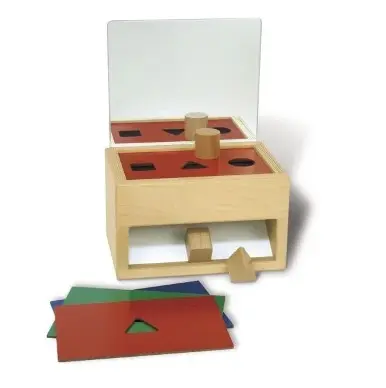
Learning and Development
Shape sorters lay the foundation for early mathematical skills. Learning to identify shapes is a key milestone, and these toys enhance overall motor and cognitive development in toddlers.
Montessori Perspective: Montessori introduces shapes through a gradual, step-by-step process, beginning with simple shapes and advancing only when the child is ready for more complexity. This progression encourages children to focus on one concept at a time, helping them build a solid understanding of each shape and its attributes. In the Montessori method, shapes are presented through tools like the geometric cabinet, which systematically isolates individual shapes to support clear learning outcomes.
Age
Shape sorters are suitable for children over 12 months. Toddlers quickly start matching shapes to their respective slots. Choosing age-appropriate sorter sizes and ensuring materials are high-quality and safe is crucial.
Pros
- Accelerates fine motor skill development in toddlers.
- Teaches cause-and-effect relationships.
- Encourages independence and self-esteem.
- Supports shape recognition and color identification.
Cons
- Small pieces may pose a choking hazard; supervise play.
- Low-quality wooden toys may have splinters.
- Some shape sorters may have sharp edges, risking injury.
Shape Sorters: Tips for Parents
- Model Each Shape’s Slot: Demonstrate how to match shapes, then let your child try. Offer gentle guidance if needed, encouraging them to find the solution independently.
- Offer Encouraging Narration: Describe their actions, like, “You’re fitting the square in! What other shapes can you find?” This keeps them engaged.
- Challenge Gently: Once they’ve mastered sorting, mix up the order or ask, “Can you find the triangle?” to reinforce shape recognition.
📌 Play Therapy Sand Tray and Sand
The play therapy sand tray offers toddlers a way to play with sand indoors. Many children may not have outdoor access to sand play, so a sand tray provides an excellent learning and calming indoor activity.
Sand tray play is an affordable and simple learning activity for toddlers. Many household items can complement the sand tray to enrich the experience. Here are some basics for setting up a sand tray activity:
- A medium-to-large wooden or plastic tray that can hold at least 15 pounds of sand.
- Clean sand or play sand.
- Small items like toys, cars, pebbles, animal figurines, colored blocks, and leaves.
- A cleaning towel for easy maintenance.
How to Use a Sand Tray for Effective Learning
- Fill the tray with sand and observe how your child engages with it. They might enjoy tracing lines, creating letters, or making patterns.
- Adding various small objects can make playtime more exciting and open up more imaginative opportunities.
- Encourage your child to build their own “world” in the sand using their creativity.
- Engage with them by asking questions about what they are creating or observing in the sand.
- Try different objects each time to keep the playtime experience fresh and engaging.
Montessori Perspective: Sand trays are integral to Montessori’s approach to early literacy. Children use their fingers to trace letters in the sand, which helps develop fine motor skills while strengthening memory of letter shapes. This tactile experience is a foundational step before writing with a pencil, reinforcing letter recognition through a hands-on approach that supports kinesthetic learning.
Age
Babies often start enjoying sand play around their first birthday. Toddlers and young children from 3 to 6 years typically use sand trays for both imaginative play and as a calming activity.
Pros
- Has a calming effect on children’s nerves.
- Offers a wonderful outlet for imaginative play.
- Sand trays are suitable for children with limited mobility.
- Helps soothe anxious or nervous children.
- Ideal for toddlers who prefer individual play over group activities.
Cons
- Children should not be left unattended while using a sand tray.
- Only use toys without small or fragile parts to prevent choking hazards or injuries.
Sand Trays: Tips for Parents
- Introduce Varied Textures: Add items like small toys, stones, or leaves to encourage sensory exploration.
- Encourage Creativity: Invite your child to make shapes, letters, or patterns in the sand. Ask, “Can you draw a happy face?” or “What shape can you make?”
- Maintain a Clean-Up Routine: Teach them to brush off excess sand and tidy up, which fosters responsibility for their play area.
💡 Shop Sand Trays: We carry portable wooden sand trays perfect for indoor letter tracing and sensory play. Durable, easy to clean, and sized for small hands.
📌 Locks Boxes & Memory Toys
How do you develop short and long-term memory in younger kids? The answer lies in memory games or lockboxes.
Playing with a lockbox, you can show your young child a favorite toy, hide it in a compartment, and lock it. The child can then use cognitive abilities to unlock the box and retrieve the toy. Expand on this game by hiding the toy, then distracting them with other activities. Later, ask them to find their toy, reinforcing memory skills.
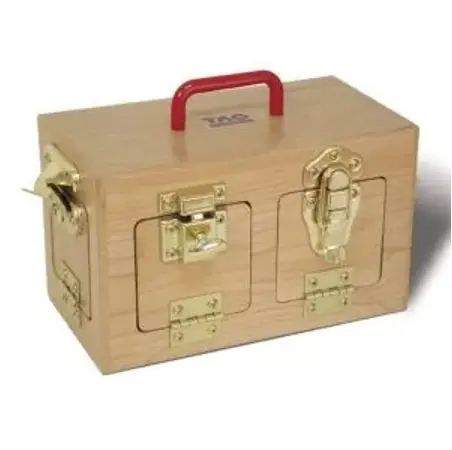
Learning and Development
Lockboxes are excellent learning toys, enhancing memory, cognitive and logical skills. They also support dexterity and fine motor skills development.
Montessori Perspective: Montessori lock boxes are designed not only to refine fine motor skills but also to encourage independence and confidence. Learning to unlock and lock doors or compartments reflects real-life skills that children find engaging and rewarding. By mastering these practical tasks, children build self-sufficiency, problem-solving abilities, and an understanding of cause and effect in their daily environment.
Age
Lockboxes are recommended for children aged 3 years and older.
Pros
- Promotes self-correction when unable to engage a lock.
- Offers a sense of achievement upon success.
- Engages children for longer play periods.
- Teaches older children to keep small valuables safe.
- Made from high-quality, durable materials.
Cons
- Small treasures may pose a choking hazard.
- Children might become skilled at unlocking household storage boxes!
Lock Boxes and Memory Toys: Tips for Parents
- Demonstrate How to Open and Close: Show each lock and latch mechanism, then encourage your child to experiment independently.
- Play Hide-and-Seek with Small Items: Place a toy inside a compartment for them to find, building memory and keeping them engaged.
- Encourage Safe Exploration: Supervise play, especially if the toy contains small parts.
📌 Locks and Latches Toys
Kids develop a significant interest in locks and latches from a very young age since they love to explore the locks and latches around the house.
When a child successfully unlocks a lock, you can see the happiness on their face. This sense of accomplishment motivates them to keep trying, keeping them engaged for hours.
Unlocking locks stimulates learning for kids with special needs, and toys with locks and latches are especially beneficial for kids with ADHD and autism.
The sturdy construction and high-quality materials make these toys durable, with handles for easy transport. Different compartments allow children to hide and discover treasures, adding to the fun.
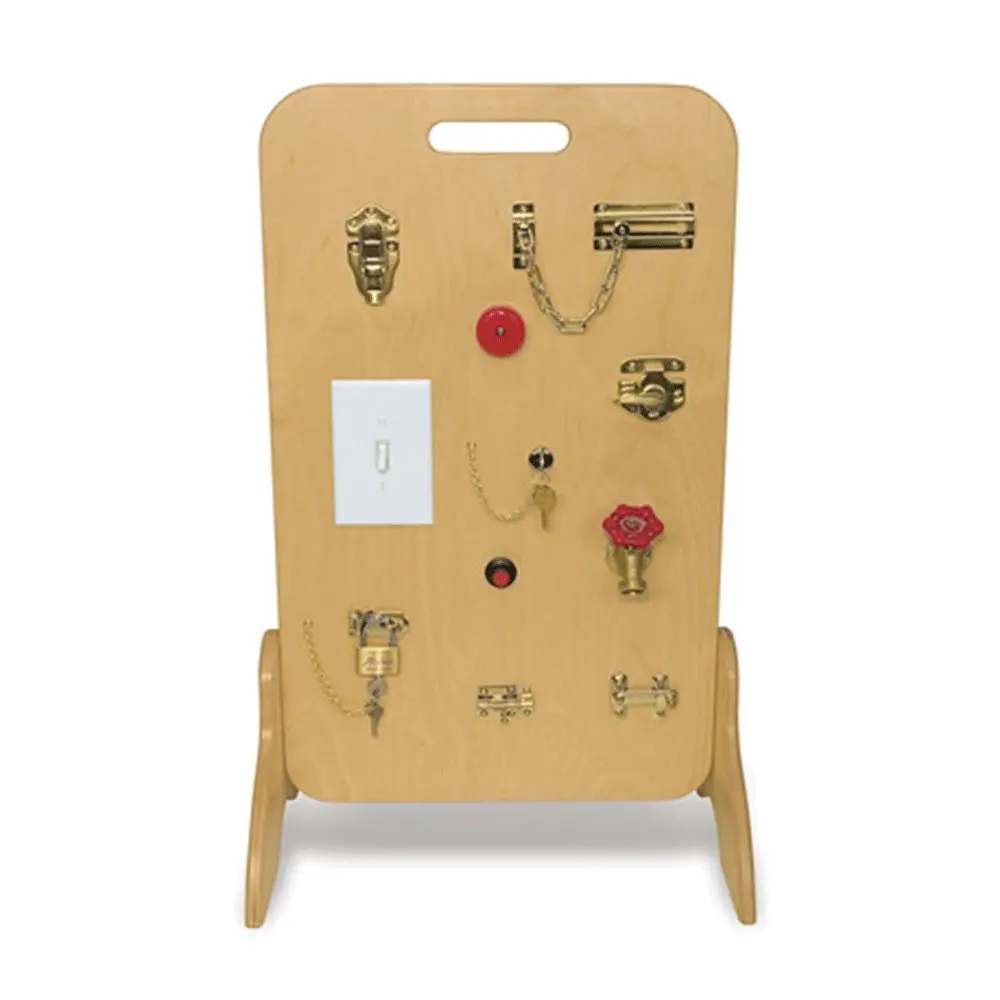
Learning and Development
Locks and latches activity boards are valuable learning resources that enhance logical thinking and decision-making skills. Additionally, they stimulate manual dexterity, hand-eye coordination, and encourage pincer grip use.
Montessori Perspective: Lock and latch boards in Montessori are not just about fine motor skills—they also foster independence, problem-solving, and real-life practical skills. By practicing with different locks, children gain confidence in handling everyday mechanisms they will encounter, such as doors, latches, and clasps. These activities provide a satisfying sense of accomplishment, reinforcing perseverance and concentration in a realistic context that mirrors tasks from daily life.
Age
Toys with locks and latches are recommended for children aged 3 and above.
Pros
- Promotes self-correction if a lock is tricky.
- Offers a sense of accomplishment.
- Engages children for extended play periods.
- High-quality, durable materials ensure long-lasting use.
Cons
- Low-quality boards may contain cheap materials that could hurt children.
Locks and Latches Toys: Tips for Parents
- Demonstrate Locking and Unlocking Slowly: Show your child how each lock and latch works. Start with simple locks, gradually introducing more complex ones as their confidence grows.
- Create a Story or Adventure: Make it a treasure hunt by hiding a small toy or "treasure" in a compartment, boosting memory and making the activity engaging.
- Encourage Self-Correction: If they struggle, gently suggest, “What if we try turning it this way?” Montessori emphasizes trial and error, strengthening problem-solving.
- Offer Supervision for Safety: Be close by, especially for younger kids, to ensure safe use and gentle handling of the toy.
🔒 Our Best-Selling Locks & Latches Board
This is one of our top-rated Montessori toys. Parents love it for building independence and fine motor skills.
Perfect for ages 3-6 | Keeps kids engaged for hours
Shop Locks & Latches Board →📌 Practical Life Tools
Practical Life Tools, such as child-sized brooms, dustpans, and kitchen utensils, introduce children to real-life activities, helping them gain independence and develop fine and gross motor skills. These tools empower children to participate in everyday tasks, building a sense of responsibility and confidence.
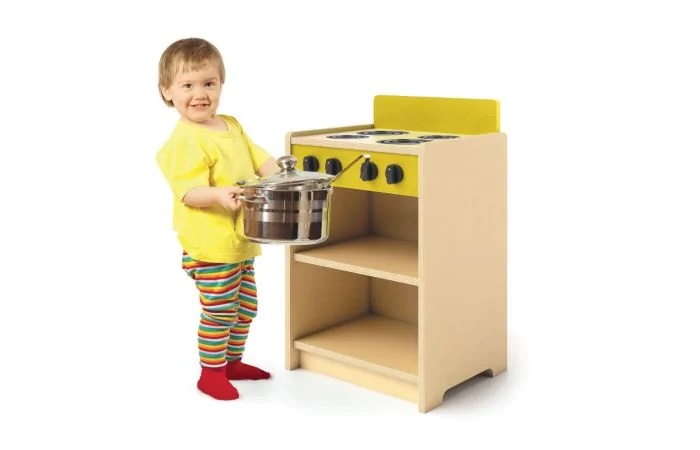
Montessori Perspective
Practical Life tools, such as child-sized brooms, dustpans, kitchen utensils, and gardening tools, allow children to participate in real-life tasks, fostering independence and responsibility. These tools help develop both fine and gross motor skills while giving children a meaningful way to engage with their environment. Through Practical Life activities, children build self-esteem and concentration as they learn to care for themselves and their surroundings.
Age
Practical Life tools are generally suitable for children ages 2-6, with specific tools adapted for age-appropriate activities.
Pros
- Encourages independence and responsibility.
- Develops fine and gross motor skills.
- Involves children in meaningful, real-world tasks.
- Builds confidence and self-esteem.
Cons
- Some tasks may require adult supervision initially.
- May need extra time and patience from parents to guide children.
Practical Life Tools: Tips for Parents
- Choose Child-Sized Tools: Ensure tools are sized appropriately for small hands.
- Start with Simple Tasks: Begin with easy activities like dusting or wiping.
- Encourage Consistency: Create daily routines involving these tasks to build responsibility.
📌 Sensory Materials
Sensory materials are designed to refine children's senses, helping them develop observational skills. Examples include sound cylinders, texture boards, and color tablets, which teach children to differentiate between sounds, textures, weights, and colors.
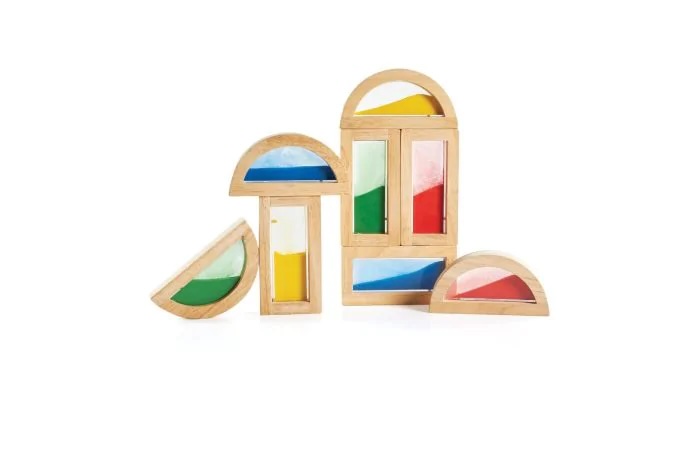
Montessori Perspective
Montessori sensory materials, such as sound cylinders, texture boards, and color tablets, are designed to refine children’s senses and enhance observational skills. By isolating specific sensory attributes—like sound, texture, or color—these materials help children develop their ability to notice and differentiate details in their environment. This sensory training strengthens focus, builds sensory awareness, and lays the groundwork for future academic learning.
Age
Sensory materials are generally suitable for children ages 3-6, with simpler materials available for younger toddlers.
Pros
- Refines sensory perception in a fun way.
- Enhances focus and concentration.
- Encourages independent exploration.
Cons
- May require guidance to help children focus on specific senses.
- Some materials may need careful handling to avoid damage.
Sensory Materials: Tips for Parents
- Introduce One Material at a Time: Allow your child to focus on one sense at a time.
- Encourage Exploration: Let children explore freely, noticing the differences between sounds, textures, etc.
- Use at Quiet Times: Sensory activities can be calming when children need focus or quiet play.
🌟 Explore Our Sensory Toy Collection
From sound cylinders to texture boards, we carry authentic Montessori sensory materials designed to refine your child's observational skills.
Shop Sensory Toys →📌 Language Development Materials
Language materials, such as sandpaper letters and movable alphabets, introduce children to the basics of reading and writing through a tactile and engaging approach. Sandpaper letters allow children to trace shapes, while movable alphabets enable word-building.
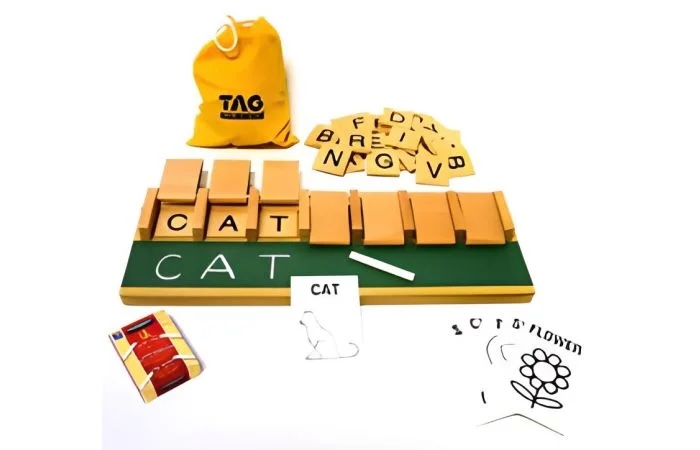
Montessori Perspective
Language materials like sandpaper letters and movable alphabets encourage children to explore phonetics and early literacy skills through a tactile approach. Tracing sandpaper letters builds muscle memory of letter shapes, while the movable alphabet allows children to create words and sentences, promoting a love for language and an understanding of language structure in an intuitive way.
🚶 Personalized Name Trains: The Ultimate Language Development Tool
Our most popular language learning toy combines everything Montessori educators love: tactile letter exploration, personalization that builds engagement, and multi-sensory learning.
How name trains support language development:
- Children trace wooden letters with their fingers (tactile learning)
- They learn to recognize their own name first (high motivation)
- Magnetic connections teach letter order and spelling
- Can be rearranged to practice other words
- Natural wood provides sensory feedback
Used by thousands of families & Montessori classrooms
Build Your Child's Name Train →Age
Language materials are typically introduced between ages 3-6, adjusted for the child's readiness in reading and writing skills.
Pros
- Introduces phonetic awareness.
- Builds foundational writing skills.
- Encourages a tactile approach to learning.
Cons
- Some children may need initial guidance to trace correctly.
- Requires space for movable alphabet activities.
Language Development Materials: Tips for Parents
- Start with Sandpaper Letters: Show children how to trace letters slowly with two fingers.
- Encourage Word-Building: Use the movable alphabet to create simple words together.
- Focus on Sounds: Emphasize letter sounds rather than names to support phonetic learning.
📌 Mathematics Materials
Montessori math materials, such as number rods, golden beads, and spindle boxes, introduce children to mathematical concepts through hands-on exploration. These materials help children visualize numbers and understand operations, laying a strong foundation for future math skills.
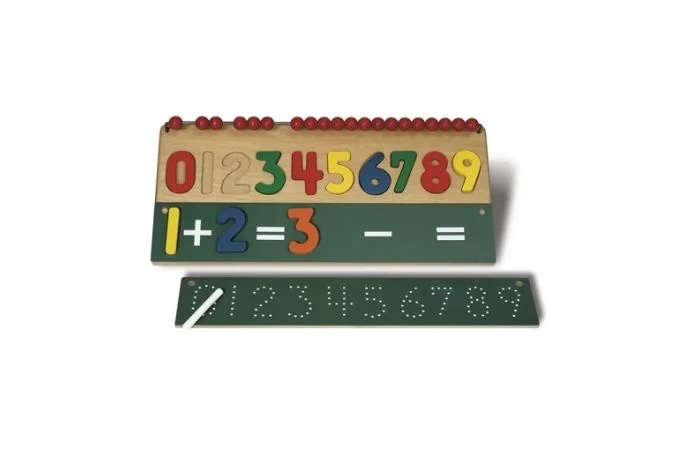
Montessori Perspective
Montessori math materials like number rods, golden beads, and spindle boxes introduce children to foundational math concepts in a hands-on, visual manner. By physically manipulating these materials, children gain a concrete understanding of quantity, place value, and arithmetic operations, helping them bridge the gap from concrete to abstract mathematical thinking.
Age
Mathematics materials are generally suitable for children ages 3-6, gradually advancing in complexity as children develop math readiness.
Pros
- Encourages a hands-on approach to learning math concepts.
- Supports gradual progression from concrete to abstract understanding.
- Helps children visualize and understand arithmetic operations.
Cons
- Some materials require guidance for initial use.
- Can be challenging for younger children without motor skill readiness.
Mathematics Materials: Tips for Parents
- Start with Number Rods: Use rods to show different quantities and compare lengths.
- Explore Basic Counting: Practice counting and simple addition with golden beads.
- Use Spindle Boxes for Visual Aid: Spindles help children visualize numbers and quantities.
📌 Geography and Cultural Materials
Geography materials like continent puzzle maps and land and water forms introduce children to the basics of geography, landforms, and cultural diversity. These materials help children build an understanding of the world around them and respect for diverse cultures.
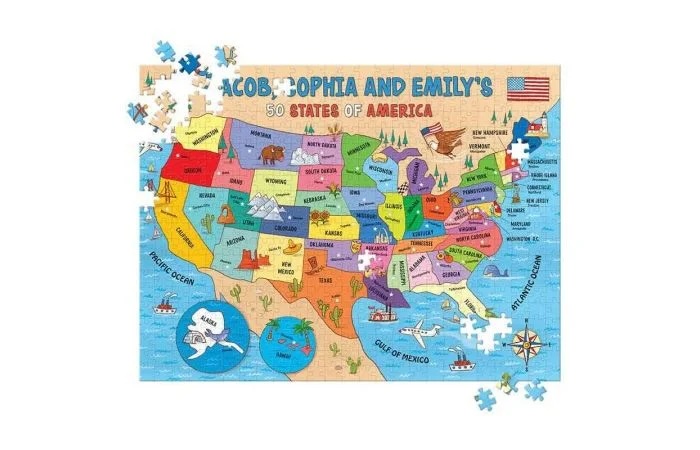
Montessori Perspective
Geography and cultural materials, like continent puzzle maps and land and water forms, introduce children to the world beyond their immediate environment. By exploring continents, countries, and natural landforms, children develop an appreciation for global diversity, learn geography skills, and build a foundation of cultural respect and awareness.
Age
Geography and cultural materials are suitable for children ages 3-6, with varying complexity as they grow and develop awareness of the world.
Pros
- Introduces children to global geography and cultural diversity.
- Encourages respect and curiosity about other cultures.
- Enhances spatial awareness and understanding of landforms.
Cons
- Some maps may be complex for very young children.
- Materials may require adult guidance for effective use.
Geography and Cultural Materials: Tips for Parents
- Begin with Simple Maps: Start with continent or country maps to introduce geography basics.
- Discuss Cultural Symbols: Talk about flags, languages, and traditions to enhance cultural understanding.
- Use Globe for Context: A globe helps children visualize world geography in 3D.
📌 Fine Motor Skill Materials
Materials like lacing boards, tweezers, and bead stringing kits help children refine their fine motor skills and hand-eye coordination, which are essential for tasks like writing, dressing, and other everyday activities.
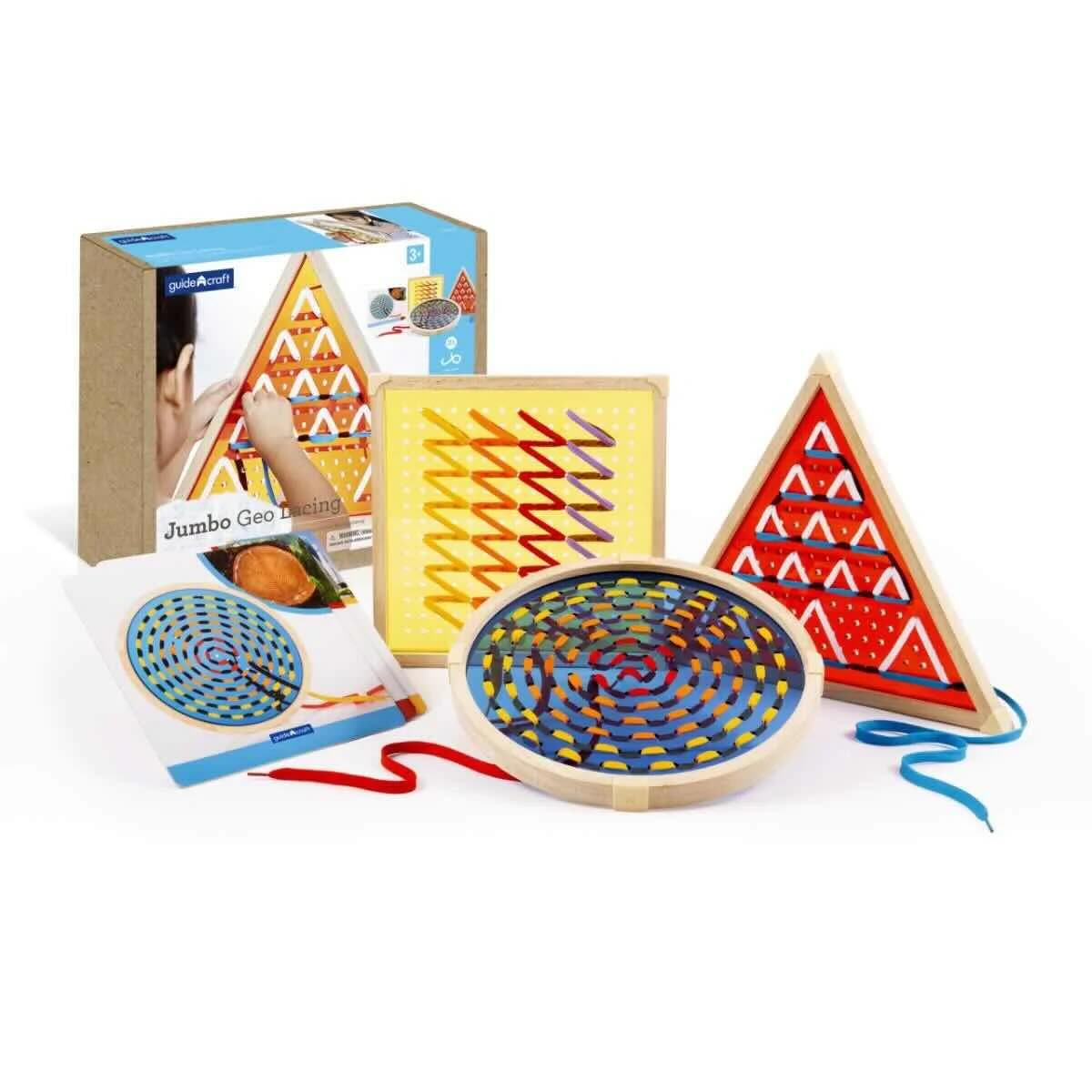
Montessori Perspective
Fine motor skill materials, including lacing boards, tweezers, and bead stringing kits, help children build hand-eye coordination and the pincer grip needed for practical skills like writing and buttoning. These activities allow children to refine their dexterity and precision, setting the foundation for both academic and everyday tasks.
Age
Fine motor materials are generally suitable for children ages 3-6, as they work on improving hand strength and coordination.
Pros
- Enhances hand-eye coordination and dexterity.
- Develops fine motor skills crucial for daily tasks.
- Supports concentration and focus through precise movements.
Cons
- May require adult supervision for younger children.
- Can be challenging initially for children with underdeveloped fine motor skills.
Fine Motor Skill Materials: Tips for Parents
- Start with Simple Lacing: Use lacing cards or boards to practice threading and pulling.
- Introduce Tweezers: Use child-friendly tweezers to pick up small objects, building pincer grip strength.
- Encourage Bead Stringing: Stringing beads onto a string or pipe cleaner builds precision and hand strength.
Montessori Toy Guide & Shopping Reference
Click any toy type to shop our curated selection
| Type of Montessori Toy | Suitable Age | Best For | Shop Now |
|---|---|---|---|
| Name Trains | 18 Months+ | Name recognition, letter learning, personalized gifts | Shop → |
| Wooden Blocks | 6 Months+ | Building, creativity, spatial reasoning | Shop → |
| Puzzles | 2 Years+ | Problem-solving, concentration, hand-eye coordination | Shop → |
| Sorting Toys | 18 Months+ | Cognitive development, categorization, fine motor | Shop → |
| Shape Sorters | 12 Months+ | Shape recognition, problem-solving, cause-effect | Shop → |
| Sand Trays | 12 Months+ | Sensory exploration, pre-writing, calming activity | Shop → |
| Locks & Latches | 3 Years+ | Fine motor mastery, independence, problem-solving | Shop → |
| Stacking Toys | 13 Months+ | Size sequencing, color learning, motor skills | Shop → |
| Sensory Materials | 2 Years+ | Sensory refinement, focus, observational skills | Shop → |
Start Building Your Montessori Toy Collection Today
Join thousands of families who trust us for authentic Montessori materials
✔ Made from natural materials • ✔ Child-safe finishes • ✔ Developmental design • ✔ Ships fast
Free U.S. Shipping • 60-Day Returns • Quality Guaranteed
References
1. (N.d.). Retrieved from https://publications.aap.org/pediatrics/article/143/1/e20183348/37330/Selecting-Appropriate-Toys-for-Young-Children-in
Frequently Asked Questions
What is the best first Montessori toy to buy?
For children 18 months and older, personalized name trains are the most popular first purchase because they work across multiple developmental stages and combine letter learning with fine motor practice. For younger babies (6-18 months), start with stacking rings or shape sorters.
Are expensive Montessori toys worth it?
Quality Montessori toys made from natural materials last for years and can be passed down to siblings. They're designed for open-ended play rather than one-time use, making them more cost-effective long-term than plastic toys that break quickly.
How many Montessori toys does a child need?
Montessori philosophy emphasizes fewer, higher-quality toys over quantity. Start with 5-8 toys that cover different skill areas (fine motor, gross motor, language, sensory) and rotate them to maintain interest.
What makes a toy "Montessori"?
Authentic Montessori toys are made from natural materials, focus on one skill at a time, are self-correcting, and allow for open-ended exploration. They should be beautiful, functional, and sized appropriately for children's hands.
Can I use regular toys in a Montessori home?
Yes. Montessori is a philosophy, not a strict rulebook. You can mix traditional toys with Montessori materials. Focus on toys that encourage independence, creativity, and skill development rather than passive entertainment.

